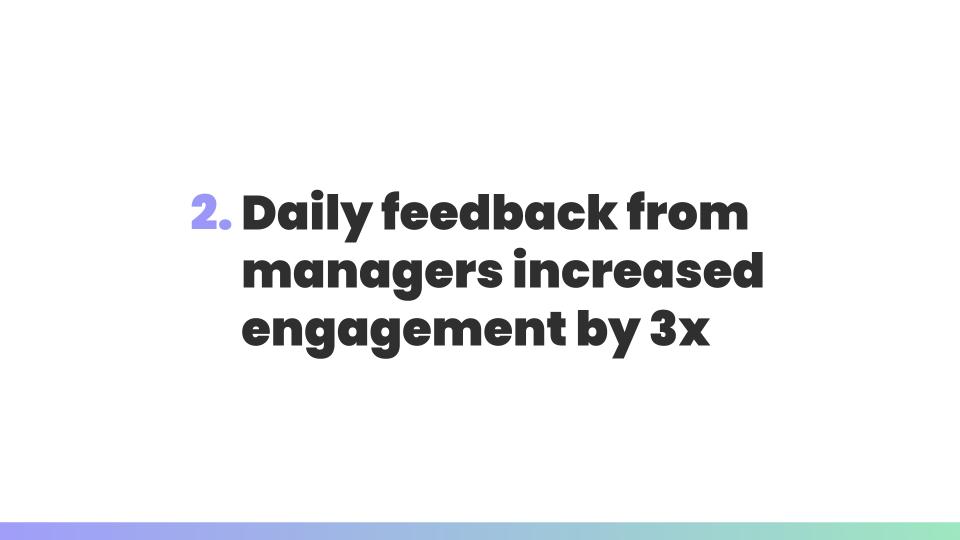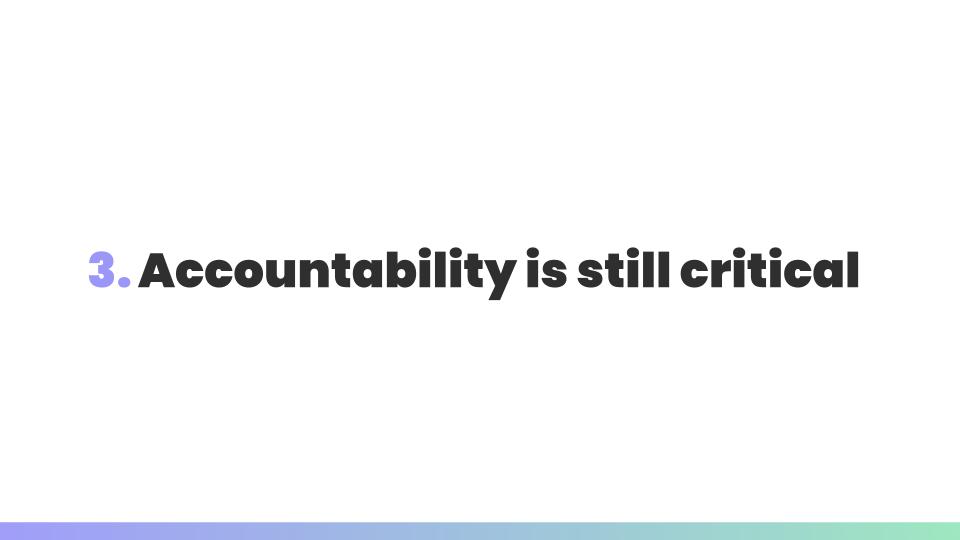The Coach Approach: How to go from Boss to Leader
Shifting from Boss to Coach
A boss tries to get the most out of his team. A coach tries to develop the individual, cares for them as a person, and helps them grow to reach their potential.
The difference is subtle, a boss perhaps wants the individuals to reach their potential, but, in the meantime, they're trying to squeeze out as much as possible to get a big return ie., profit, sales, productivity. Instead, the coach is trying to nurture and grow each individual.
The boss wants to tell you what to do, but the coach empowers you.
I know I’m starting to sound like a broken record, but it’s crucial to solidify the difference.
A boss is always in control, giving direction, not hearing feedback. A coach empowers and understands feedback and communication are some of the most important parts of a learning cycle.
How you coach has a direct impact on how well your employees perform.
Gallup estimates the financial cost of poor management and reduced productivity from not engaged or actively disengaged employees is between $960 billion and $1.2 trillion per year in the U.S.
Here are three requirements for effective coaching according to Gallup's research: establish expectations, continually coach, and create accountability measures.

Employees whose manager involved them in setting goals were nearly four times more likely to be engaged than other employees.
Yet only 30% of employees experience this basic expectation.

Employees who receive daily feedback from their manager are three times more likely to be engaged than those who receive feedback once a year or less.
But the feedback needs to be meaningful. It has to be based on an understanding of the individual's strengths.
As a rule, managers should give their employees meaningful feedback at least once a week.
These coaching conversations can vary from daily Quick Connects to recurring Check-ins to Developmental Coaching (keep reading to find out what these are).

While many organizations are changing their annual review systems, accountability is still important.
Managers should have progress reviews at least twice per year and focus on the employee's purpose, goals, metrics, development, strategy, team contribution and personal life.
These reviews should be achievement-oriented, fair and accurate, and centered on development.
How to Turn Traditional Performance Management into Performance Development
Gallup research reveals that there are better newer ways to dramatically improve management and productivity.
Yet Gallup also found that organizations overlooked, or bypassed, established scientific findings. They appear to have been swept away by performance management fads over the years.
Organizations using traditional performance management systems have struggled to inspire and develop employees because their approach leads to unclear and misaligned expectations, ineffective and infrequent feedback, and unfair or missing evaluation practices.
When systems and processes make it difficult for people to get their work done, leadership loses credibility.
But when employees can achieve what you ask them to complete, you will start to see the culture you want.

Performance measurement needs to be paired with individualized development.
If managers don't merge individual employee development with their performance measurement, employees can perceive performance measurement as a threat, and their development becomes disconnected from business goals.
Here are five conversation styles that can help you change your performance discussions.
The 5 Coaching Conversations
1. Role and Relationship Orientation.
Coaching starts with the first impression.
The primary objective of this initial conversation is to get to know each individual and their strengths. And to establish expectations that align with the person's strengths and the organization's overall objectives.
In this conversation, which typically lasts from one to three hours once a year or when a person's role changes, managers define what success looks like in the individual's role and how their work relates to their coworkers' expectations.
This conversation should serve as a prelude to the semiannual Progress Review (the fifth conversation) and include the following:
- Purpose
- Goals
- Metrics
- Development
- Strategy
- Team
- Wellbeing
2. Quick Connect.
While it's important for employees to have the autonomy to "own" their work and how they do it, ongoing daily and weekly conversations serve many purposes. For one thing, employees hate feeling ignored — it's even worse than focusing on their weaknesses.
Some attention, no matter what form, is better than no attention.
Ongoing conversations that are rooted in the individual's strengths are the most engaging.
In addition, it's best to discuss some business issues while they're happening so you, as the manager, can make quick decisions and steer the employee in the right direction.
For managers to become effective coaches, they need to develop the Quick Connect habit — either through email, phone calls, hallway conversations or other brief interactions (one to 10 minutes) at least once a week.
When managers master the art of the Quick Connect conversation, employees always know if they're on the right track - and can proceed without unnecessary barriers. Also, managers can give employees timely recognition for success, discuss anything that's getting in the way of their progress or just touch base.
These conversations shouldn't feel forced and will vary, depending on the employee, their strengths and their job responsibilities.
3. The One-on-One Check-In.
In Check-In conversations, managers and employees review successes and barriers and align and reset priorities.
Managers should have Check-In conversations once or twice a month, and they should last from 10 to 30 minutes, depending on the employee's needs and job responsibilities.
Check-In conversations are somewhat more planned than Quick Connect conversations. In this type of conversations, you can discuss expectations, workload, goals and needs.
4. Developmental Coaching.
It is a true art and arguably the most difficult type of conversation to master. A Developmental Coaching conversation can be as brief as 10 to 30 minutes, but it can have an impact on an employee's entire career.
Developmental Coaching conversations are most effective when the manager knows the employee well and understands their unique personality.
Based these conversations on project assignments and development opportunities.
The purpose of this conversation is to give the employee direction, support and advice when they are exploring career, aspirational or developmental opportunities.
Developmental Coaching conversations can lead to scheduled skills training or action-planning activities. And managers need to remember to focus on the employee's strengths and accomplishments during these conversations; rather than fixate on their weaknesses.
5. Progress Reviews.
The annual review has become the scapegoat for failed performance management, mainly because most managers haven't been using the other four conversations.
Annual reviews evolved into threatening and dreaded performance meetings with enormous implications for pay and promotion. Of course, effective ongoing coaching has to create accountability. Managers need to formally review performance progress and rest expectations as performance needs change.
Progress Review conversations are a powerful coaching tool when they focus on celebrating success, preparing for future achievements and planning for development and growth opportunities
You should have these conversations at least twice a year for one to three hours. And the dialogue in these conversations needs to be consistent with your other daily, weekly and monthly coaching conversations.
Parting Thoughts
On the surface, it might seem like these five conversations are yet another already overscheduled manager.
Who has time for all this?
But actually, these five conversations make managing employees more efficient. And ultimately, they will save you significant time because, with successful ongoing coaching, the employees will put less energy toward misguided work efforts and unproductive politics that hurt the business.
Becoming an effective coach is the most important skill any manager can develop.
How employees interpret their value to the organization, even their pay, will be a direct reflection on how they are coached.
By mastering the five coaching conversations, managers can focus more of their time and effort on the coaching moments that matter most.
If you want to become an effective coach, check Unicorn Labs’ leadership coaching program.
Now that you have mastered how to manage conflict - what is your plan of action for making an impact with your team?
Now that you have mastered how to create an environment of empowerment via the 3-P's - what is your plan of action for making an impact with your team?
Developing Your Communication, Empathy and Emotional Intelligence skills is start. What is your plan of action for implementing your learnings within your your team?
Now that you understand the differences in these titles - what is your plan of action for what you learned?
Assessing your team's behaviors is a start - but do you have a plan of action for the results?
Now that you have mastered the art of decision making - what is your plan of action for making an impact with your team?
.png)
A DISC Behavior Assessment is the best way to understand your team's personalities.
Each DISC Assessment includes a Self Assessment and DISC Style evaluation worksheet

-23.avif)







.webp)









